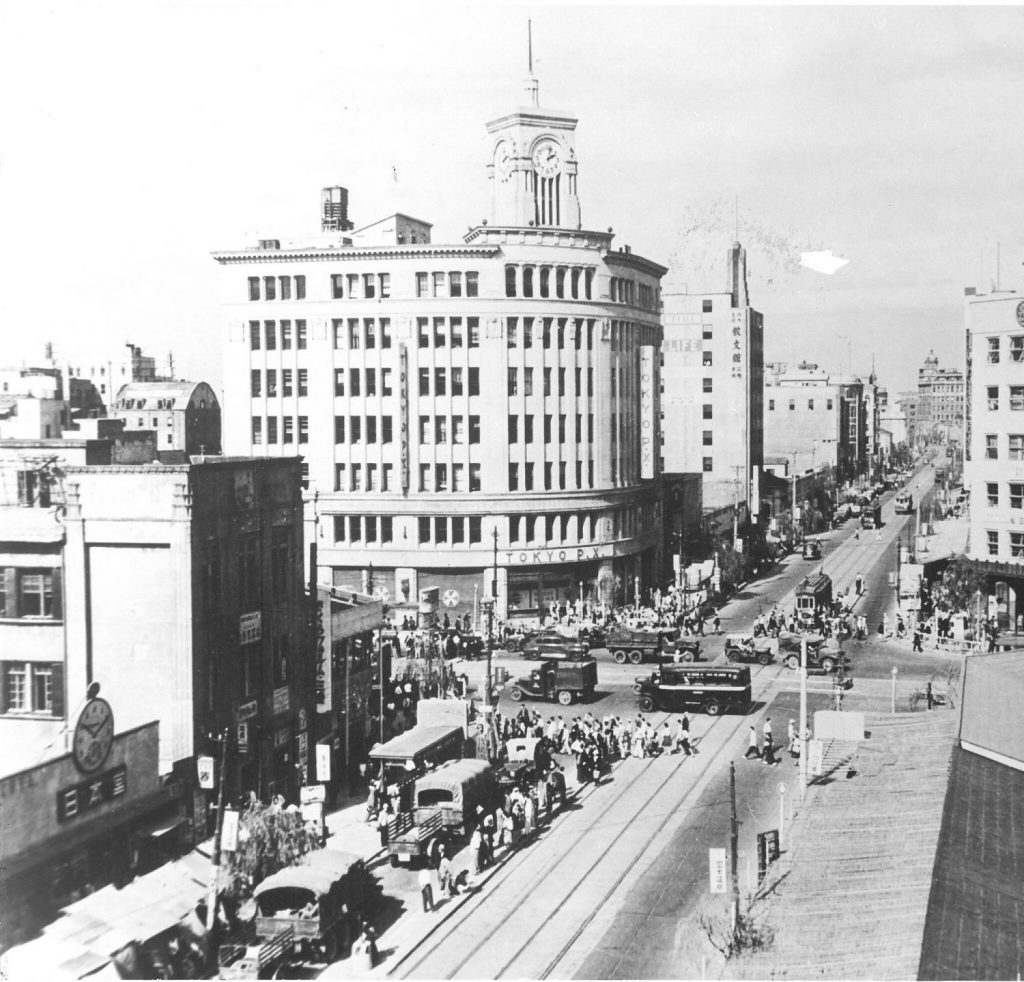On Aug. 14, 1945, President Harry S. Truman announced the unconditional surrender of Japan, ending World War II. Ever since, Aug. 14 has been known as V-J Day, or Victory Over Japan Day, in the United States.
But according to the National WWII Museum, the official U.S. celebration takes place Sept. 2, the anniversary of the day that Gen. Douglas MacArthur, Supreme Commander of the Allied Forces, signed the Instrument of Surrender for the United Nations, and Fleet Adm. Chester Nimitz signed for the United States. That was 77 years ago today.
Regardless of the date, after the war ended, thousands of U.S. troops were sent to Japan to help in rebuilding efforts. The Army Exchange Service responded, opening post exchanges throughout the country to meet the needs of the troops and their families.
 The first post exchange in Japan, pictured above, opened on Oct. 24, 1945, in the famous Hattori Clock Building in downtown Tokyo’s Ginza Street shopping district. Army Capt. W.W. Ward, two lieutenants, five enlisted men and two truck drivers spent a week redecorating the building and training 50 Japanese associates in rudimentary English. The Tokyo Exchange was billed as “the finest in the world.”
The first post exchange in Japan, pictured above, opened on Oct. 24, 1945, in the famous Hattori Clock Building in downtown Tokyo’s Ginza Street shopping district. Army Capt. W.W. Ward, two lieutenants, five enlisted men and two truck drivers spent a week redecorating the building and training 50 Japanese associates in rudimentary English. The Tokyo Exchange was billed as “the finest in the world.”
According to an Associated Press story from 1945, “Souvenir-crazy GIs … swamped [the PX] in a giant tow-day buying spree” during the grand-opening weekend in early November.
“When the doors opened at noon Saturday,” the AP’s Hal Boyle reported, “the building looked as neat as any Fifth Avenue department store with counters piled high with colorful goods.” The store had been stocked with kimonos, wood prints, lacquer ware and other examples of Japanese crafts.
“When the doors closed at 5 p.m.—three hours ahead of schedule—the place looked as though it had been swept clean by a monsoon,” Boyle continued, reporting that in 5 hours, about 17,000 enthusiastic service men had spent nearly $100,000 at the store.
 Hundreds of the troops were preparing to return to the States and wanted to take back Christmas presents. When the supply of 3,000 kimonos ran out, some shoppers asked if they could buy the ones the female associates were wearing.
Hundreds of the troops were preparing to return to the States and wanted to take back Christmas presents. When the supply of 3,000 kimonos ran out, some shoppers asked if they could buy the ones the female associates were wearing.
“The post exchange staff and sales girls worked feverishly all day Sunday restocking, and when the doors opened Monday, a double line of waiting Soldiers was around the entire building,” Boyle wrote. “Everything was gone in a few hours.”
Other exchanges opened in Tokyo, Yokohama, Osaka, on Okinawa, and elsewhere in Japan.
By 1951, exchanges in Japan employed more than 700 Americans and 10,000 Japanese, carried nearly 25,000 different inventory items and operated more than 790 sales and service units.
Today, the Exchange still operates stores at Camp Zama, Yokota Air Base and Misawa AB on mainland Japan, and Kadena AB and Marine installations on Okinawa.
SOURCES: Department of Defense; National WWII Museum; Exchange History Flickr, Newspapers.com; “Notes from ‘Over There’” by Hal Boyle, The Associated Press, November 1945



Leave a Reply